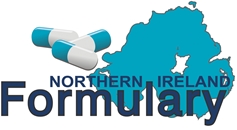4.7.4.2 Migraine prophylaxis
Prescribing Notes
- The choice of preventive treatment depends primarily upon the side-effect profile of the drug and co-existing morbidities, refer to NICE CG150, CKS and Cautions section.
- The aim of preventive treatment is to reduce the frequency, severity and duration of attacks and avoid medication-overuse headache (MOH)
- Consider preventive treatment if:
- Migraine attacks are having a significant impact on quality of life and daily function e.g. occurring frequently (more than 1 attack per week on average) or are prolonged and severe despite optimal treatment
- The person is at risk of MOH due to frequent use of acute drugs
- Standard analgesia and triptans are contraindicated or ineffective
- It is essential to rule out MOH before preventive treatment is initiated. If MOH is suspected then the appropriate management is drug withdrawal rather than prevention
- If both topiramate and propranolol are ineffective (after two months of therapy at the target dose) or are unsuitable, refer to NICE CKS Migraine or BASH Guidelines for information on other drug treatment options including amitriptyline and candesartan. If there is no benefit with an adequate trial of 3 prophylactic medicines and withdrawal of overused medication, consider referral to headache services for further management
- Treatment is considered to have failed if there is lack of response to the highest tolerated dose after 8-12 weeks of treatment
- Prophylaxis should be given for approx. 6 months, then consider gradual drug withdrawal
- Pizotifen and clonidine have been widely used for many years but with little clinical trials evidence of efficacy. They should now be superseded
Cautions
- Careful assessment of the appropriateness of prescribing propranolol to individuals at risk of self-harm is required. See HSIB report.
- Topiramate is now contraindicated in pregnancy and in women of childbearing potential unless the conditions of a Pregnancy Prevention Programme are fulfilled. See MHRA.
- Consult individual product SPC for full details on cautions.
